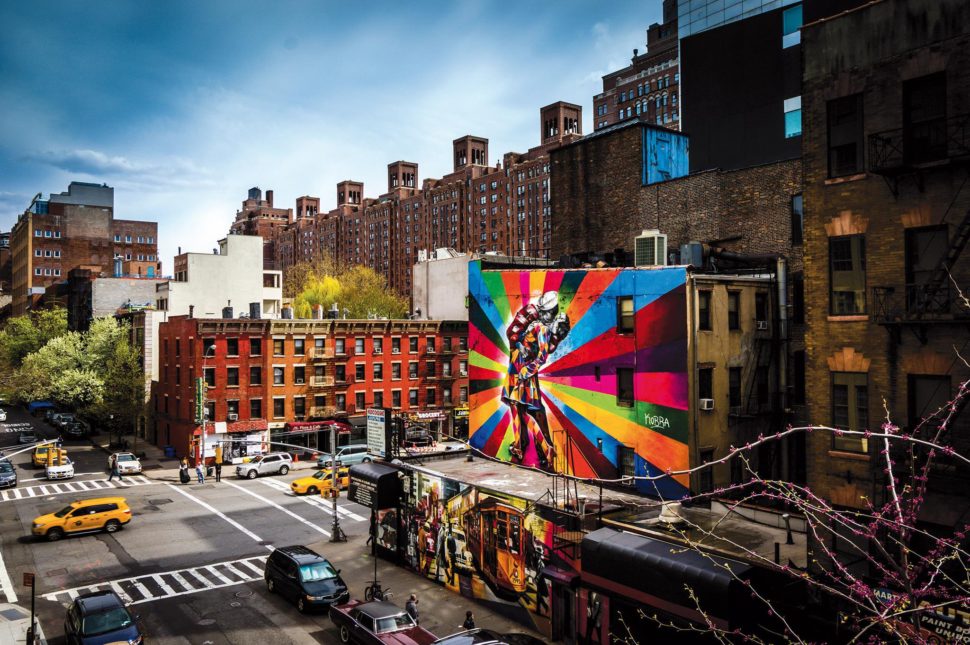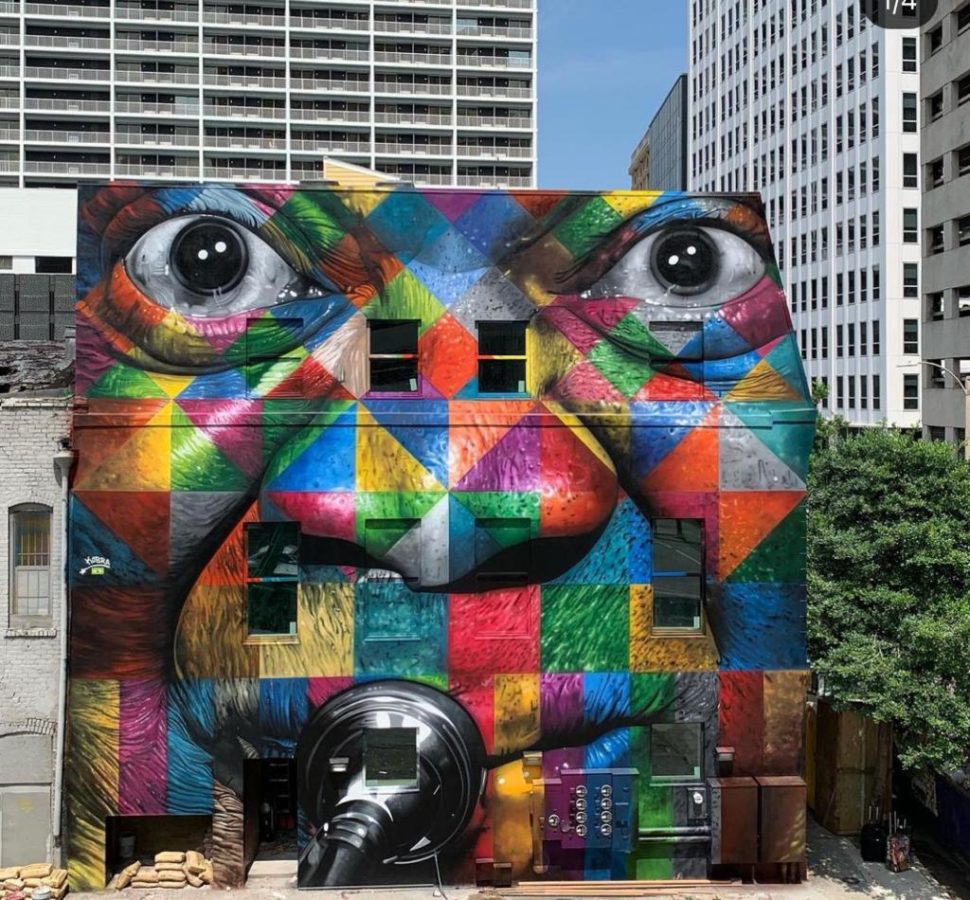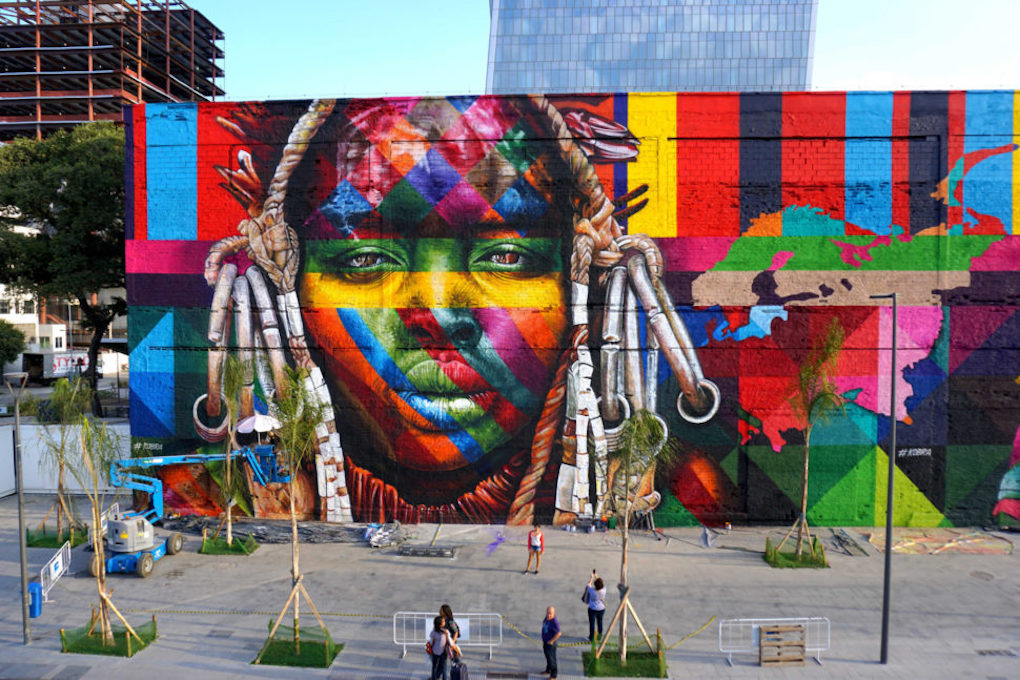Located in Rio de Janeiro’s downtown area, is where you will find Eduardo Kobra’s breathtaking mural titled Etnias, a 32,300-square-foot graffiti wall that goes beyond what is considered street art. The world’s largest graffiti wall blows the eyes of the visitor, not only because of its size, but also because of its vibrant colors and impressive sense of proportion.
The work portrays a Mursi woman from Ethiopia, a Kayin woman from Thailand, a Native Brazilian, a Supi man from Northern Europe, and a Huli man from Papua New Guinea.
But who is the artist behind this ambitious and celebrated street art?
His name is Eduardo Kobra, a Brazilian artist who has similar artwork in many major cities around the world such as New York, Paris, Moscow, Tokyo and so on. The remarkable features of this work are inspired by American Hip Hop culture and acclaimed painters Eric Grohe, Banksy, Keith Haring and Diego Rivera.
He utilizes bright colors and bold lines while staying true to a kaleidoscope theme throughout his art. The technique of repeating squares and triangles allows him to bring to life the people he depicts in his images.
Kobra started early. He was only 12, when he started to paint the walls of São Paulo’s streets. While it was illegal activity back then, it also made him famous around the city due to his impressive art skills. Years later, he received his first big contract— painting walls at Playcenter, a famous Brazilian amusement park.
“This ended up giving me a new perspective, structure and the possibility to evolve with my art and work,” he told Forbes Brazil Magazine in an interview.
Animal rights, the environment protection, nature, peace, tolerance and racism are themes that are always found in his artwork.
After São Paulo, New York is one of the places that received dozens of his larger-than-life creations. One of them is the two-level public art piece viewable from the High Line Park in NYC. The painting is based on the iconic Alfred Eisenstaedt photograph, V-J Day in Times Square, which portrays an American sailor kissing a woman in a white dress on Victory over Japan Day in Times Square.
The bottom panel shows Times Square in 1945 when the famous kiss scene happened. Kobra has added colorful hues over images, giving them new life in our contemporary imagination.

Another one is the tribute to the late Michael Jackson in the East Village. The mural depicts Jackson as a child and adult. The mural is located at the corner of 11th Street and First Avenue.

New Orleans was also a destination for the Brazilian artist’s works. Kobra presented a wide-eyed closeup portrait of Louis Armstrong near the corner of Gravier and O’Keefe streets in the CBD. The 45-foot-tall painting of the most popular jazz musician of the 20th century, Kobra’s three-story Armstrong mural is painted on the back wall of a century-old building at 300 S. Rampart St., in a stretch of the city known for jazz-era nightclubs.

Kobra explains that his process of work has always been very intuitive, natural and spontaneous.
“When I receive invitations from all over the world , it’s always like that— a white wall and the challenge of creating. I always try to paint with my own brush, be very safe in what I believe, very convinced, and I observe everything.”
His passions range from architecture, plastic arts, landscaping to both contemporary and older arts.
“I have a method that I developed, and I try to stick firmly to it. It’s my way of creation, it’s what I am, what I believe, what I see. I ended up dividing my creation as if it were a closet with several doors. In each of them there is a theme that I like to deal with: historical clippings, walls of memories, walls in 3D. All this arises from my experiences, from a comment I heard, a documentary, an aggression that touched. And then I make it a form of protest. Everything I observe ends up interfering with my creative process.” he told Forbes Brazil Magazine.





